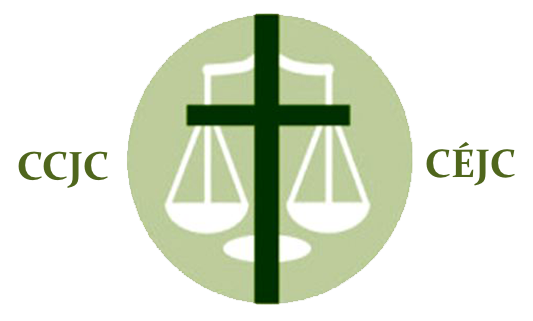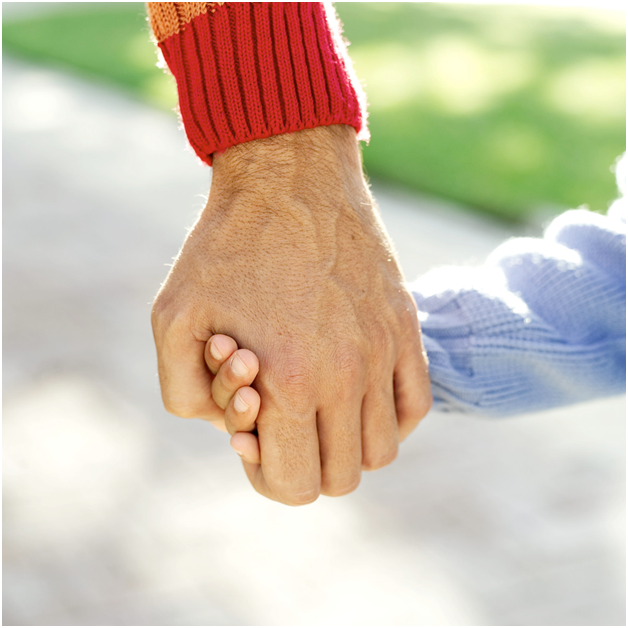***To add your perspective to this question, become a CCJC member today and visit the discussion forum!***
Contributed by Greg Dunwoody, CCJC Board Member
and Chaplain, 14 years, at Headingley Correctional Centre, Province of Manitoba
“…and a little child shall lead them.” (Isaiah 11:8)
Maybe the voices – and the silences – of the little children need to be more widely heard by the adults currently working in justice and corrections, by our elected representatives and society as a whole. Radical, hope-filled and life-giving changes might then happen for children and their families as they encounter the justice system and the incarceration of a parent.
As a prison chaplain of some 14 years now I am very much aware of how often the children are not at the centre of justice and corrections. Jesus talked about welcoming a little child. Indeed, becoming like a child is a quality for living or entering into the kingdom of heaven. When it comes to children and the justice system two of Jesus’ sayings strike me particularly as a chaplain in the prison context:
“Occasions for stumbling bound to come, but woe to the one by whom the stumbling block comes.”
“Take care that you do not despise one of these little ones for, I tell you, in heaven their angels
continually see the face of my Father in heaven.” (Mathew 18:7, 10)
These are strong sayings and they call us to engage justice and corrections as these impact the children.
Maybe, if we all knew the children then we would take a different approach to restoring justice and living justice at the first and most basic level: the family and its neighbourhood. The care and the needs of children are often neglected, if not forgotten altogether, in the process of justice and the management of corrections. Could today become the time when the care and the needs of the children are given a central place in justice and corrections?
“I thank you Father, Lord of Heaven and earth because you have hidden these things from the wise and intelligent and have revealed them to infants.” (Luke 10:21)
Often enough, for example, the children are present when an arrest is made. How is this done with care for the children? What would the children ask for? Later, when a parent goes for bail, greater attention is given to previous charges and convictions and the present charge than to the care and needs of the children. This, even though the time for previous convictions has been served. I remember a case where a working father was denied bail on a domestic charge. This meant that his wife and two teenage children eventually had their house foreclosed, went on welfare for the first time, and moved to a poorer part of the city. As a consequence, the teenage children changed schools and lost their peer support. When the father was released later the same year and went back to work, the teenagers moved to a third school and a third residence as home. More alternatives to incarceration are needed for a restorative justice that keeps children and families at the centre, at the heart of our care.
“if any of you put a stumbling block before one of these little ones…it would be better if a great millstone…” (Matthew 18:6) [author’s comment: this is a rather harsh Biblical saying only raised to show the importance of tending to the children and who is responsible for putting a stumbling block in place.]
By their very structure, systems of both Justice and Corrections carry imbalances of power, authority and presumed wisdom over those they claim to serve. We know that the poor are incarcerated at disproportionate rates. We also know that the children of the incarcerated and the spouses experience hardships in many different aspects of their lives and these come with a tremendous social cost to all of us, their neighbours. When someone has done harm there is a critical need to focus on healing of everyone affected, especially the children.
“People were bringing infants to him that he might touch them; and when the disciples saw it, they sternly ordered them not to do it.” (Luke 18:15)
What is the experience of children when they follow their parent to court, which often takes place in large, unfamiliar and cold buildings? They see people wearing strange robes, speaking a strange language, talking to each other and not their parent. I remember a wife-mother with a new born baby being asked to leave the courtroom during the husband-father’s case because the baby was crying.
In contrast, “Let the little children come to me; do not stop them!” (Mark 10:14)
In the courtroom children come hoping to see their incarcerated mom or dad; maybe receive a hug and a kiss. Instead children see dad or mom led to the prisoner box. At the end of the hearing children may see their parent led away in hand-cuffs. No hugs or kisses here! In some situations a parent is not brought to the court house. The children and spouse attend only to discover that the incarcerated parent is on an internal video monitor that transmits from the prison to the court room. In some situations, only the judge actually sees the picture. How would placing children at the centre with tender care call for new practices in justice and corrections?
In a number of correctional facilities across the country ALL visiting is done with a glass partition between the family and the incarcerated parent. I experienced a young girl visiting her father with the mother. She saw her father on the other side and she began sobbing and wailing “Daddy, Daddy, Daddy” as her little hand was scratching and sliding down the glass trying to touch her father.
“In the very place where it was said to them: You are not my people, there they shall be called children of the living God!” (Romans 9:26)
A sentence to federal time is simply a sentence of two years or more. In many cases this means a sentenced parent will be in custody quite a distance away from the children, often out of province. Frequently the children and family is too poor and with few resources to move and live closer to the incarcerated parent. Again, the needs and care of the children should be at the centre.
Some wonderings:
Is there any custodial centre that has a family picnic for the children?
Is there a celebration or ritual upon a person’s release from custody that honours the children, celebrates the restorative growth of the parent(s) and points to a future family life with hope?
An invitation:
May we hear your story? Perhaps you have a story, can describe a project, or have a dream on this issue. What are your ‘wonderings’? We’d like to hear from you and continue the discussion.
Some links…and please add your links to the discussion:
http://pm.stpeterscollege.ca/literacy_09_15_04.html
“Literacy Program for prisoners’ children” Suzanne St.Yves. Fathers reading stories into audio cassettes that are then sent out with the story book to their children. Brandon Correctional Centre, Manitoba.
http://www.vanierinstitute.ca/include/get.php?nodeid=1636
“Waiting for Mommy: Children of Incarcerated Women” by Alison Cunningham and Linda Baker plus “What About Dad?” compiled by Sara MacNaull, in Families and Incarceration, Transitionmagazine, Summer 2011, Vol. 41, No. 2, pp. 1-4 and p. 8 respectively. The Vanier Institute of the Family.
http://quakerservice.ca/usp-cotent/uploads/2013/04/Spring-2013-QC.pdf
“Invisible Victims” by Sarah Chandler in Quaker Concern, Vol. 39, No.2, Spring 2013, p. 1.
http://www.wlu,ca/documents/54416/Incarcerated_moms_galley_proof.pdf
Incarcerated Mothers: Oppression and Resistance, Gordana Eljdupovic and Rebecca Jaremko Bromwich, editors. Demeter Press, 2013. ISBN 9781927335031 Available from Brunswick Books.

